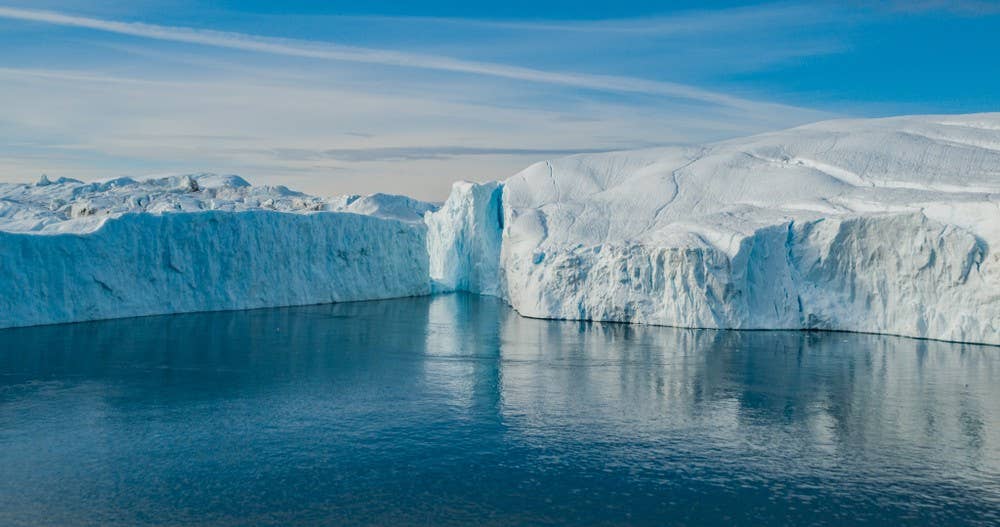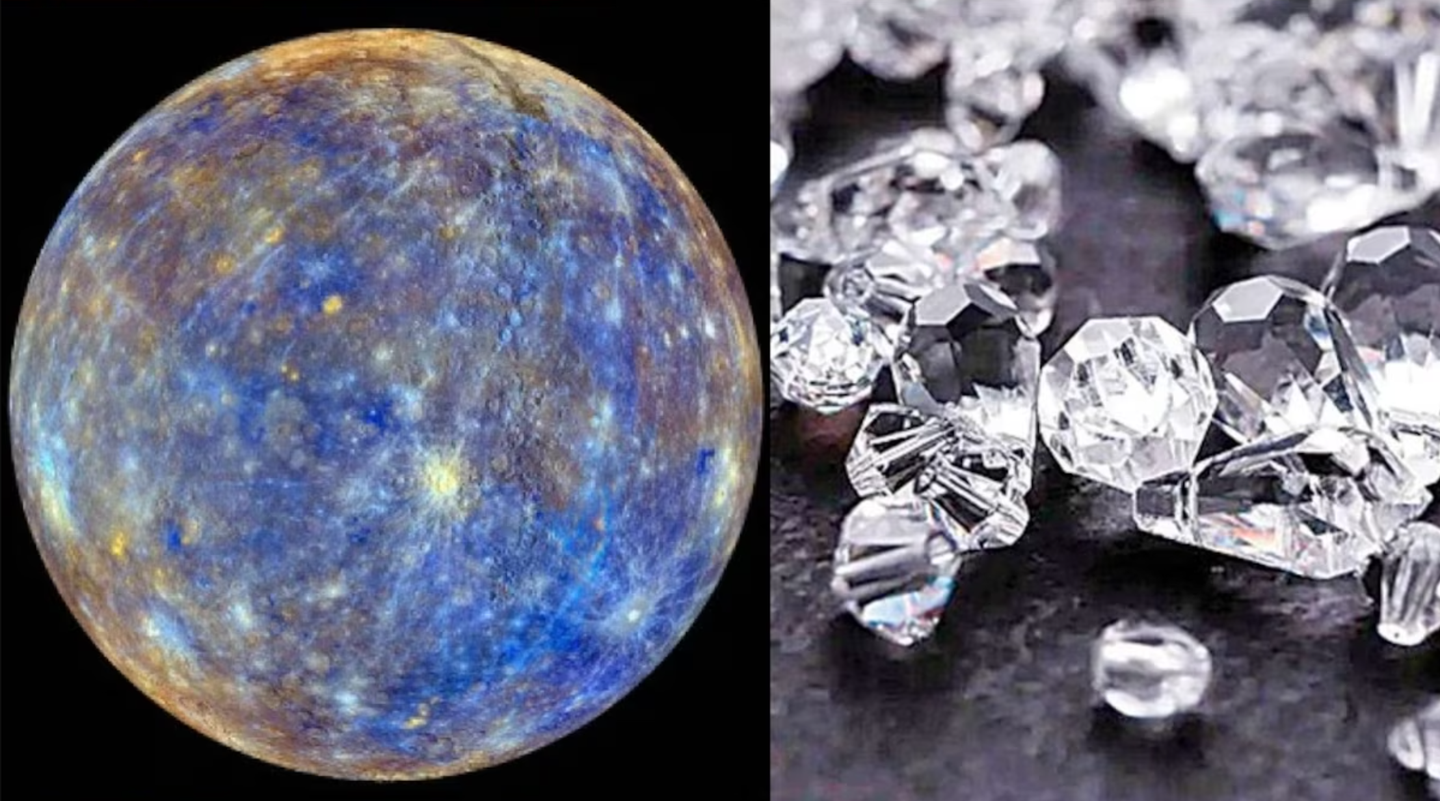Scientists discover what triggered Earth’s last ice age
Experts have been puzzled by two mysteries: Where did the ice sheets that marked the last ice age come from, and how could they grow so fast

[Mar. 30, 2023: Daniel Stolte, University of Arizona]
At the beginning of the last ice, local mountain glaciers grew and formed large ice sheets, like the one seen here. (CREDIT: iStock Images)
Paleo-climate experts have long been puzzled by two mysteries: Where did the ice sheets that marked the last ice age come from, and how could they grow so quickly?
A new study led by University of Arizona researchers proposes an explanation for the rapid expansion of the ice sheets that covered much of the Northern Hemisphere during the most recent ice age, and the findings could also apply to other glacial periods throughout Earth's history.
The study, published in the journal Nature Geoscience, sheds new light on the mechanisms driving Earth's glacial-interglacial cycles. The periodic advance and retreat of ice sheets in the Northern Hemisphere is a complex phenomenon that researchers have devoted substantial effort to understanding.
The new research proposes an explanation for the rapid expansion of the ice sheets that covered much of the Northern Hemisphere during the most recent ice age, and the findings could also apply to other glacial periods throughout Earth's history.
Related Stories
About 100,000 years ago, when mammoths roamed the Earth, the Northern Hemisphere climate plummeted into a deep freeze that allowed massive ice sheets to form. Over a period of about 10,000 years, local mountain glaciers grew and formed large ice sheets covering much of today's Canada, Siberia, and northern Europe.
While it has been widely accepted that periodic "wobbling" in the Earth's orbit around the sun triggered cooling in the Northern Hemisphere summer that caused the onset of widespread glaciation, scientists have struggled to explain the extensive ice sheets covering much of Scandinavia and northern Europe, where temperatures are much more mild.
Unlike the cold Canadian Arctic Archipelago where ice readily forms, Scandinavia should have remained largely ice-free due to the North Atlantic Current, which brings warm water to the coasts of northwestern Europe. Although the two regions are located along similar latitudes, the Scandinavian summer temperatures are well above freezing, while the temperatures in large parts of the Canadian Arctic remain below freezing through the summer, according to the researchers.
During this time, the earth’s climate repeatedly changed between very cold periods, during which glaciers covered large parts of the world, and very warm periods during which many of the glaciers melted. (CREDIT: CDM.org)
"The problem is we don't know where those ice sheets (in Scandinavia) came from and what caused them to expand in such a short amount of time," said the study's lead author, Marcus Lofverstrom, an assistant professor of geosciences and head of the UArizona Earth System Dynamics Lab.
To find answers, Lofverstrom helped develop an extremely complex Earth-system model, known as the Community Earth System Model. This allowed his team to realistically recreate the conditions that existed at the beginning of the most recent glacial period. Notably, he expanded the ice-sheet model domain from Greenland to encompass most of the Northern Hemisphere at high spatial detail.
Using this updated model configuration, the researchers identified the ocean gateways in the Canadian Arctic Archipelago as a critical linchpin controlling the North Atlantic climate and ultimately determining whether or not ice sheets could grow in Scandinavia.
The simulations revealed that as long as the ocean gateways in the Canadian Arctic Archipelago remain open, Earth's orbital configuration cooled the Northern Hemisphere sufficiently to allow ice sheets to build up in Northern Canada and Siberia, but not in Scandinavia.
In a second experiment, the researchers simulated a scenario in which marine ice sheets obstructed the waterways in the Canadian Arctic Archipelago. This diversion led to a freshening and weakening of the North Atlantic deep circulation, sea ice expansion, and cooler conditions in Scandinavia. The simulations showed that this scenario was sufficient to start growing ice in Scandinavia.
Canadian Arctic Archipelago consists of 94 major islands and 36,469 minor islands north of mainland Canada. (CREDIT: World Atlas)
The researchers also analyzed marine sediment records from the North Atlantic, which showed evidence of glaciers in northern Canada several thousand years before the European side. The sediment records also showed compelling evidence of a weakened deep ocean circulation before the glaciers formed in Scandinavia, similar to the modeling results.
The study's findings have significant implications for our understanding of past climate changes and could help improve climate models. The researchers noted that the mechanisms they identified may apply to every glacial period, not just the most recent one.
"It's exciting to think that our findings could help explain more short-lived cold periods, such as the Younger Dryas cold reversal that punctuated the general warming at the end of the last ice age," Lofverstrom said.
The study's findings may also have implications for understanding future climate change. The research suggests that small perturbations to Earth's climate system can lead to significant and rapid changes in the size and distribution of ice sheets, with potentially major impacts on sea level rise, ocean currents, and global climate patterns.
"This research highlights the importance of studying Earth's past climate to help inform our understanding of present and future climate change," said Thompson. "It shows that small changes in Earth's system can have large and unexpected effects, which is particularly relevant in our current era of rapid climate change."
The research team also noted that the study is a testament to the power of interdisciplinary collaboration. The project involved experts in geosciences, oceanography, and climate modeling, among other fields, and required cutting-edge computational resources to simulate the complex interactions between Earth's atmosphere, oceans, and ice sheets.
"This study represents a major advance in our understanding of Earth's climate history, and it would not have been possible without the collaboration of scientists from diverse disciplines and the use of state-of-the-art modeling techniques," said Lofverstrom. "We hope that our findings will inspire further research and lead to new insights into the complex processes that drive Earth's climate system."
The study's results have been met with enthusiasm by other researchers in the field. "This is an exciting and important study that sheds new light on one of the major mysteries of Earth's climate history," said Anders Levermann, a professor of dynamics of the climate system at the Potsdam Institute for Climate Impact Research in Germany, who was not involved in the study. "The research provides compelling evidence for the role of marine ice in triggering glaciation in Scandinavia, and it has significant implications for our understanding of past and future climate change."
The study's lead author, Marcus Lofverstrom, plans to continue investigating the complex interactions between Earth's climate system and ice sheets in future research. "There is still much we don't know about the processes that drive Earth's glacial-interglacial cycles, and this study is just one piece of the puzzle," he said. "But we hope that our findings will inspire others to explore these fascinating questions and help us better understand the complex and dynamic nature of our planet's climate system."
The study marks a major milestone in the field of paleo-climatology and provides new insights into one of the most significant events in Earth's recent history. As the world grapples with the urgent challenge of climate change, the study's findings underscore the importance of understanding the complex interactions between Earth's climate system and ice sheets and the potential for small perturbations to have significant and rapid impacts on global climate patterns.
The study's findings are also relevant to ongoing debates about climate change and the role of human activities in driving global warming. While the study focused on past climate changes, it provides valuable insights into the complex interplay between Earth's climate and its various components, including ice sheets, oceans, and atmospheric circulation.
For more environmental good news stories check out our Green Impact section at The Brighter Side of News.
Note: Materials provided above by University of Arizona. Content may be edited for style and length.
Like these kind of feel good stories? Get the Brighter Side of News' newsletter.



